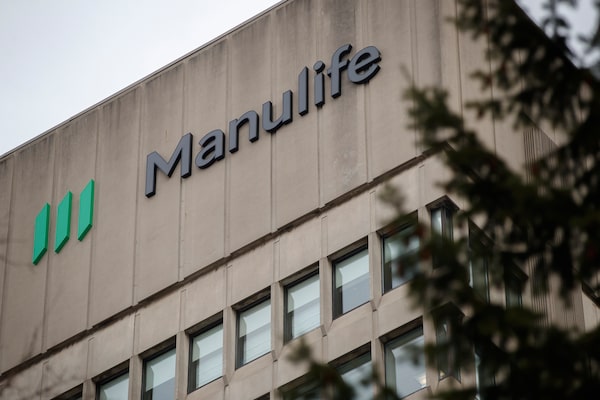
In May, Manulife pledged to get to net-zero carbon emissions by 2050, and part of its plan includes increasing investments that take advantage of forests and farms to capture carbon.Cole Burston/The Canadian Press
A subsidiary of Manulife Financial Corp. has bought a large tract of forest in Maine to maintain as a carbon sink and source of revenue from third-party emitters seeking offsets in a growing voluntary market.
Boston-based Hancock Natural Resource Group Inc. has acquired more than 36,000 hectares of timberland along the border with Quebec. It will use the investment to generate income from selling carbon offsets and harvesting timber.
The voluntary carbon offset market, where companies can purchase credits to counteract their own emissions, could be worth as much as US$100-billion by 2030, according to the private-sector-led Taskforce on Scaling Voluntary Carbon Markets.
Last month, Canadian Imperial Bank of Commerce joined three other global banks to launch a blockchain-based platform for buying and selling offsets.
Hancock is a unit of Manulife Investment Management, the Canadian insurer’s asset management arm. The unit runs agriculture and forestry businesses around the world, harvesting timber from 2.2 billion hectares. This acquisition represents its first geared primarily to sequestration of heat-trapping greenhouse gasses. Manulife also has the option of offsetting its own assets’ emissions.
“Some portion of [the forest] will be harvested, using our sustainable working forest practices, producing the raw materials for wood products,” said Sarah Chapman, Manulife Financial Corp.’s chief sustainability officer. “The difference here is a larger portion of the forest will remain unharvested for longer periods of time.” That will allow it to absorb more carbon, she said.
In May, Manulife pledged to get to net-zero carbon emissions by 2050, and part of its plan includes increasing investments that take advantage of forests and farms to capture carbon.
UN’s blockbuster climate report heightens urgency for businesses to take action
ESG trend is bypassing most of the global capital market, and that’s bad news for sustainability
Voluntary offsets are criticized by some environmental groups as insufficient to meet net-zero targets. They contend industries should instead move away from fossil-fuel use. The International Energy Agency (IEA) said this year that concentrating on offsets could divert efforts from actual CO2 reductions. Offsets can be effective for removing emissions in instances where the credits can be verified as permanent reductions, however, the IEA said.
“There’s certainly been criticism of relying on forests as the ultimate climate solution,” Ms. Chapman said. It’s definitely one of the solutions – particularly timberlands that are managed sustainably, she said. “So yes, [preventing] deforestation, but also how we’re managing those forests to maximize both the carbon sequestration that’s available, as well as the financial returns.”
This week, the UN’s Intergovernmental Panel on Climate Change published a stark report detailing the increasingly destructive forces of climate change. Its scientists agreed urgent action on decarbonizing the economy is required to prevent the world reaching a tipping point in which the worst impacts become normalized. Banks, asset managers and insurers, whose capital allocation drives major environmental choices, will pay a major role in UN climate talks set for Glasgow, Scotland, in November.
Ms. Chapman said that developing and enforcing universal operating and reporting standards for offsets involving “nature-based solutions” such as forests and farms will be key to their having clear environmental benefit. She said Manulife is contributing to that effort.
“We see the opportunity, but also recognize that there are challenges that exist around more formalized, uniform global standards for offsets, and that’s what really important for this market in order to achieve those carbon emissions reductions,” Ms. Chapman said.
Your time is valuable. Have the Top Business Headlines newsletter conveniently delivered to your inbox in the morning or evening. Sign up today.